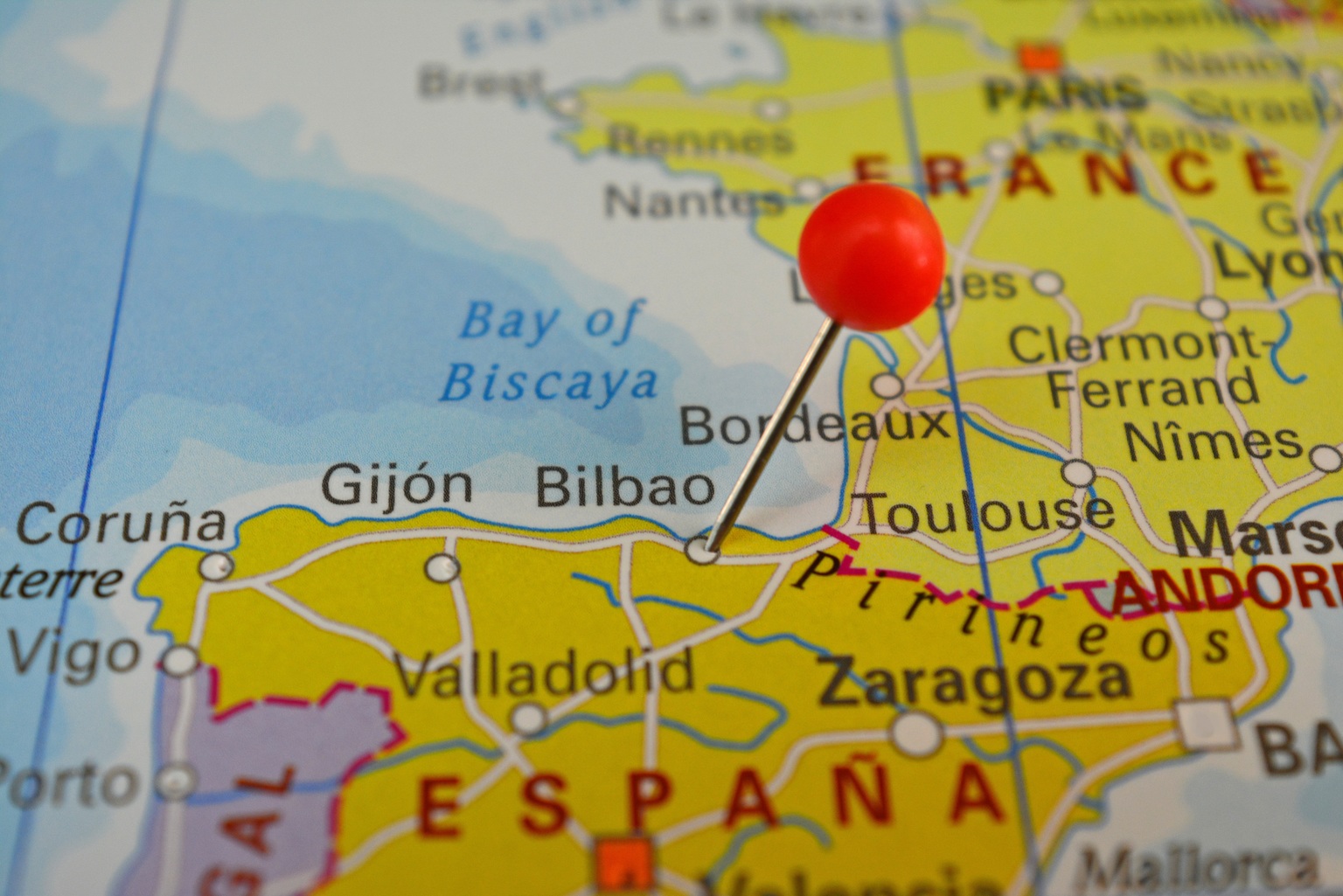About Bilbao
Bilbao is the largest city in the province of Biscay and the Basque Country as a whole. It is the tenth largest city in Spain and its metropolitan area has around 1 million inhabitants.
It is located near the northern shore of the Iberian Peninsula, about 16 kilometres (10 miles) south of the Bay of Biscay.

The city lies between two small mountain ranges, which make up part of the Basque Threshold; the range between the Cantabrian Mountains and the Pyrenees. The River Nervión runs through the city and into the Bay of Biscay. Over the centuries this connection to the sea shaped the development of Bilbao into a heavily industrialised city.
However, since the mid-1990s Bilbao has been in a process of deindustrialisation and transition to a service-based economy. There has been an investment in urban renewal and infrastructure, as its importance as a seaport waned.
This started with the opening of the Bilbao Guggenheim Museum, which showcases contemporary art, and celebrated its 20th anniversary this year. The redevelopment has continued with investments in infrastructure, housing, business developments and transport. The river has seen an extensive clean-up operation and the winding down of industrial activity along its shores.
Many of the world's best architects have made their mark on the city, with a variety of beautiful and engaging creations in steel and glass, including the Guggenheim Museum and the White Bridge.

View of the city with the Guggenheim Museum bottom right.
There are cool bars and cafés to discover, and plenty of places to explore. This includes "The Seven Streets"; narrow lanes packed with a colourful eclectic mix of places to browse, shop, and eat. For food-lovers there are food halls, Michelin starred restaurants and the bars of the Plaza Nueva for pintxos, a Basque variety of tapas.

Pintxos, Bibao.
For those who want to unwind, there are beaches in the metropolitan area that are just a few metro stops away.

Plenzia Beach, Bilbao.
Climate
Bilbao has an oceanic climate due to its proximity to the Bay of Biscay, with precipitation throughout the year and without a well-defined dry summer. The rainiest seasons are between autumn and spring. Summer is mild with temperatures between 25and 26°C and tends to be drier.
Access and Transportation
Bilbao has an international airport and it is also well connected by rail and road to other European cities.
Air
Bilbao Airport serves the city. It is the busiest terminal in the Basque Country and the entire northern coast of Spain. Top connections from the airport include London, Frankfurt, Munich, Paris, Malaga and Amsterdam. It is 9 kilometres (5.6 miles) north of Bilbao. There is a scheduled bus service to the city centre bus station.
Bilbao Airport - http://www.aena.es/en/bilbao-airport/index.html
Railway
Bilbao's main train station, Abando, has links to the national routes and destinations such as Madrid, Barcelona, Burgos and Valladolid. The Euskotren station is used for the city's suburban Euskotren network.

Abando Station, Bilbao.
Road
The city is connected to the European road network by the AP-8 toll motorway, and to north-west Spain by the A-8 motorway. It is connected to the rest of Spain by the AP-68 toll motorway.
Bus
Travelers can get buses to all over the country, and buses to Santander and San Sebastián are often quicker than the train. The city has 43 bus lines and over 100 that connect Bilbao with almost every point in Biscay and part of Alava. The area's main bus station is the TERMIBUS, near to the San Mamés stadium.
Local Transportation
The city is easy to get around on foot and visitors can easily navigate their way around the city using the local transportation network. The Bilbao tram connects the bus station to the Guggenheim Museum, the main train station, the city centre and the Euskotren station. There are several metro stations all over the city that are used by 85 million passengers every year. There are also metered taxi services.

Traditional Riverside Buildings, Bilbao.
